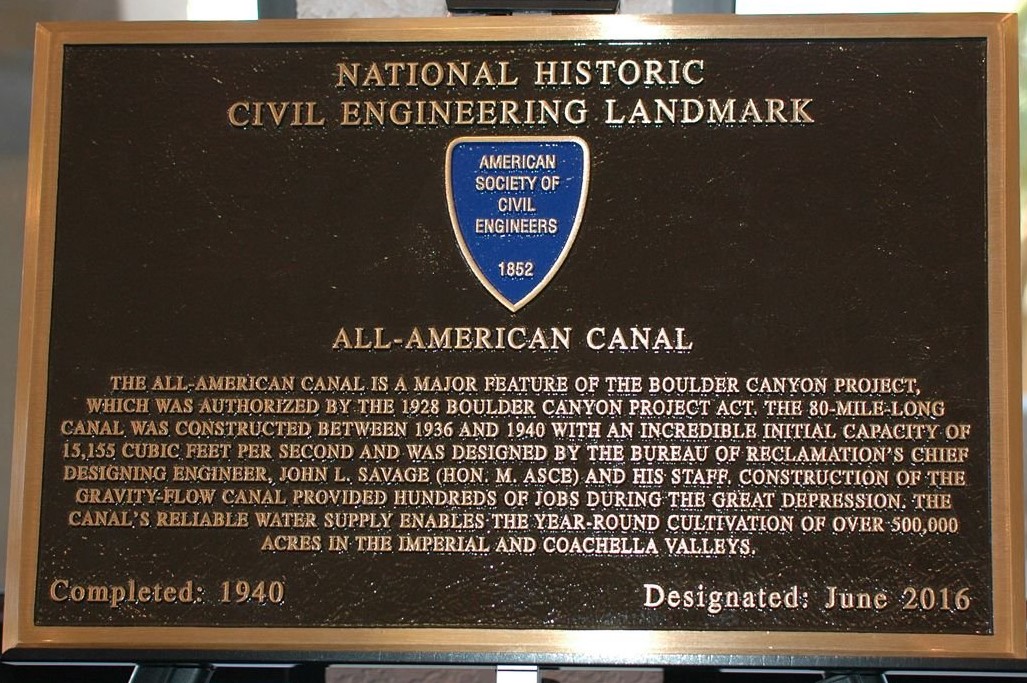All-American Canal System
32°52'59.0"N
114°27'54.0"W
The All-American Canal (AAC) System was authorized by the US Congress in 1928 as part of the Boulder Canyon Project Act. It was developed during the depths of the Great Depression and constructed between 1935 and 1939. Design and construction were carried out by the US Bureau of Reclamation (USBR), with John L. Savage as the Chief Designing Engineer.
It is one of the pre-eminent water supply systems in the world. With a flow rate of 15,155 cubic feet per second, the AAC is the largest capacity water supply and irrigation canal system in the United States. It provides a safe and reliable source of irrigation water for over 500,000 acres of year-round agricultural production and domestic water for over 150,000 residents in California’s Imperial Valley.
The All-American Canal begins at Imperial Dam on the Colorado River (about 20 miles northeast of Yuma, Arizona) and feeds into the Coachella Canal, East Highline Canal, and Central Main Canal before terminating at the western end of the Imperial Valley where it drains into the Westside Main Canal. Development of the AAC system innovatively solved significant challenges related to Colorado River floods; annually filtered out thousands of tons of conduit-clogging sediment; threaded through the once impassable Imperial Sand Dunes; and, designed robust structures for one of the most seismically active areas of the United States.
The 80-mile-long canal is powered solely by gravity, with a total vertical drop of the entire canal of only 175 feet. In crossing the 50-foot-deep valley of the New River just west of Calexico, California, the design introduced two parallel 196-inch-diameter steel plate siphons supported by reinforced concrete piers across the valley between the inlet and outlet structures. Completed in 1937 these are believed to be the largest diameter inverted siphons constructed by the USBR, not surpassed until 1975.
One of the first uses of a low-head (reinforced concrete 25-foot drop structure) hydroelectric facility was added to the AAC in 1941. Based on its success, four more hydroelectric facilities were added up until the mid-1980s along with off-line water storage facilities added between 2008 and 2010. Energy generated by the canal over its first 50 years helped to retire the $25 million construction loan, and the canal continues to deliver renewable power to portions of southeastern California and southwestern Arizona.
The original canal was an unlined earthen channel built in porous desert sands and alluvial soils. Losses due to seepage from the canal were known to be problematic and constituted a loss of 70,000-acre feet per year. These losses were originally considered unrecoverable. A solution authorized in 2006 for a design of a 23-mile canal lining project that constructed a parallel canal was completed in 2010.


